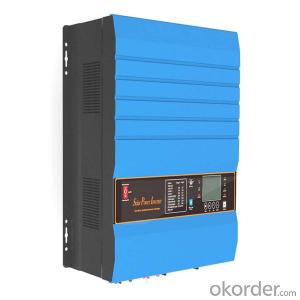Abb 10kw Solar Inverter
Abb 10kw Solar Inverter Related Searches
Ac Inverter For Solar Panels Solar Panel With Ac Inverter Gas Furnace With Ac Panda Hot Water Bottle Cover Minion Hot Water Bottle Cover Abb Solar Water Pump Inverter Solar Water Pump Philippines Extra Long Hot Water Bottle Solar Panel Dc To Ac Inverter Old Fashioned Hot Water BottleHot Searches
Power One Solar Inverter Price 20kw Solar Inverter Price 10kw Solar Inverter Price Solar Inverter 10kw Price Solar Power Inverter Types Solar Power Inverter Suppliers Solar Inverter Emergency Power Solar Power Inverter Companies Power Factor Solar Inverter Solar Inverter Power Factor Solar Inverter Backup Power Tesla Solar Power Inverter Us Solar Module Manufacturers Solar Inverter Hybrid 10kw Type Of Inverter For Solar Types Of Inverter For Solar Used Solar Inverter For Sale Inverter Size For Solar System Solar Edge Inverter For Sale 5kw Solar Inverter For SaleAbb 10kw Solar Inverter Supplier & Manufacturer from China
Okorder.com is a professional Abb 10kw Solar Inverter supplier & manufacturer, offers integrated one-stop services including real-time quoting and online cargo tracking. We are funded by CNBM Group, a Fortune 500 enterprise and the largest Abb 10kw Solar Inverter firm in China.Hot Products
FAQ
- A solar inverter synchronizes with the grid frequency by continuously monitoring the frequency of the electricity supplied by the grid. It adjusts its own output frequency to match the grid frequency, ensuring that the electricity it generates is synchronized with the grid. This synchronization allows the solar inverter to seamlessly inject power into the grid and maintain a stable and reliable electrical supply.
- To connect a solar inverter to solar panels, the DC output of the solar panels needs to be connected to the DC input of the inverter. This is usually done using appropriately sized and rated solar cables and connectors. The positive terminal of the solar panel is connected to the positive terminal of the inverter, and the negative terminal of the solar panel is connected to the negative terminal of the inverter. Properly following the manufacturer's instructions and guidelines is crucial to ensure a safe and efficient connection.
- A solar inverter handles voltage flicker by continuously monitoring the voltage fluctuations in the grid and adjusting its output accordingly. It uses advanced control algorithms to stabilize the voltage and maintain a consistent power supply to the connected devices. Additionally, it may have built-in features such as reactive power compensation and voltage regulation to minimize voltage flicker and ensure a smooth and reliable energy conversion process.
- A solar inverter plays a crucial role in the overall efficiency of a solar system. It converts the direct current (DC) electricity generated by solar panels into alternating current (AC) electricity that can be used to power household appliances and feed into the grid. By efficiently converting and optimizing the electricity output, a solar inverter ensures minimal power losses and maximizes the system's overall efficiency.
- The efficiency rating of a solar inverter refers to the percentage of solar energy that is converted into usable electricity. It indicates how effectively the inverter can convert the direct current (DC) power generated by solar panels into alternating current (AC) power for use in homes or businesses. Higher efficiency ratings mean less energy loss during the conversion process, resulting in more electricity being available for consumption.
- Yes, a solar inverter can be used with solar-powered telecommunications systems. Solar inverters are devices that convert the direct current (DC) generated by solar panels into alternating current (AC) that can be used to power various electrical devices, including telecommunications systems. By using a solar inverter, the solar energy captured by the panels can be efficiently utilized to power the telecommunications equipment, making it a suitable and environmentally-friendly solution.
- The role of a solar inverter in a grid-tied system is to convert the direct current (DC) electricity generated by the solar panels into alternating current (AC) electricity that is compatible with the electrical grid. It also ensures the synchronization and stability of the solar power system with the grid, allowing excess energy to be fed back into the grid and enabling the system to draw power from the grid when needed.
- A solar inverter handles voltage drop by continuously monitoring the voltage levels from the solar panels. It adjusts its output voltage accordingly to ensure that the electricity being produced is compatible with the grid or the appliances it is connected to. This helps to compensate for any voltage drop that may occur due to factors such as distance, resistance, or shading, thereby maintaining a consistent and stable power supply.















































